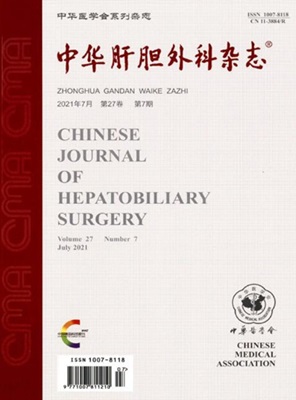提高高龄胆道疾病患者围手术期安全性的防治措施
Q4 Medicine
引用次数: 1
摘要
目的探讨提高高龄胆道疾病患者围手术期安全性的防护和治疗措施。方法采用回顾性病例对照研究。收集2013年7月至2018年12月在北京电力医院普外科接受治疗的老年胆道疾病患者的临床数据。根据年龄将患者分为高年龄组(HA)(≥80.0岁)和中低年龄组(MLA)(60.0~79.0岁)。分析比较两组围手术期安全性的相关指标,如术前并存疾病、肝肾心肺功能、手术方式、术中出血量、手术时间、术后住院时间和术后住院天数。结果372例患者中,男性168例,女性204例,年龄60.0~96.0(72.0±8.6)岁。HA组有69名老年患者(37名男性和32名女性),年龄在80.0至96.0(84.4±3.8)岁之间。中老年组303例(男性131例,女性172例),年龄60.0~79.0(68.4±5.8)岁(MLA组)。(1) 与MLA组相比,HA组术前并存疾病明显增加(均P<0.05)。关键是要采取积极治疗术前并存疾病、严格掌握手术指征、合理选择手术方式、准确实施精准手术、严格监测和处理术中紧急情况、及时预防和治疗术后并发症等措施,尤其是在围手术期注重维持心肺功能。关键词:胆道疾病;围手术期;高龄患者;安全本文章由计算机程序翻译,如有差异,请以英文原文为准。
Preventive and therapeutic measures to improve perioperative safety in extremely elderly patients with biliary diseases
Objective
To study protective and therapeutic measures to improve perioperative safety in extremely elderly patients with biliary diseases.
Methods
A retrospective case-control study was conducted. The clinical data of elderly patients with biliary diseases treated at the Department of General Surgery, Beijing Electric Power Hospital, from July 2013 to December 2018, were collected. According to age, the patients were divided into the high age (HA) group (≥80.0 years) and the middle-low age (MLA) group (60.0~79.0 years). The related indexes of perioperative safety such as preoperative coexisting diseases, functions of liver, kidney, heart and lung, surgical procedures, intraoperative blood loss, operation time, postoperative hospital stay and postoperative hospital stay were analyzed and compared between the two groups.
Results
Of the 372 included patients, there were 168 males and 204 females, aged 60.0 to 96.0(72.0±8.6) years. There were 69 elderly patients (37 males and 32 females) aged 80.0 to 96.0(84.4±3.8) years in the HA group. There were 303 patients in the middle and lower age group (131 men and 172 women), aged 60.0 to 79.0(68.4±5.8) years (MLA group). (1) Preoperative coexisting diseases were significantly increased in the HA compared with the MLA group (all P 0.05).
Conclusions
Operation in extremely elderly patients with biliary diseases is safe and feasible. The key is to take measures such as actively treating preoperative coexisting diseases, strictly mastering operative indications, reasonably selecting surgical procedures, accurately carrying out precise operation, strictly monitoring and dealing with intraoperative emergency, timely preventing and treating postoperative complications, and especially focusing on maintaining cardiopulmonary function during the perioperative period.
Key words:
Biliary diseases; Perioperative period; Extremely elderly patients; Safety
求助全文
通过发布文献求助,成功后即可免费获取论文全文。
去求助
来源期刊

中华肝胆外科杂志
Medicine-Gastroenterology
CiteScore
0.20
自引率
0.00%
发文量
7101
期刊介绍:
Chinese Journal of Hepatobiliary Surgery is an academic journal organized by the Chinese Medical Association and supervised by the China Association for Science and Technology, founded in 1995. The journal has the following columns: review, hot spotlight, academic thinking, thesis, experimental research, short thesis, case report, synthesis, etc. The journal has been recognized by Beida Journal (Chinese Journal of Humanities and Social Sciences).
Chinese Journal of Hepatobiliary Surgery has been included in famous databases such as Peking University Journal (Chinese Journal of Humanities and Social Sciences), CSCD Source Journals of China Science Citation Database (with Extended Version) and so on, and it is one of the national key academic journals under the supervision of China Association for Science and Technology.
 求助内容:
求助内容: 应助结果提醒方式:
应助结果提醒方式:


